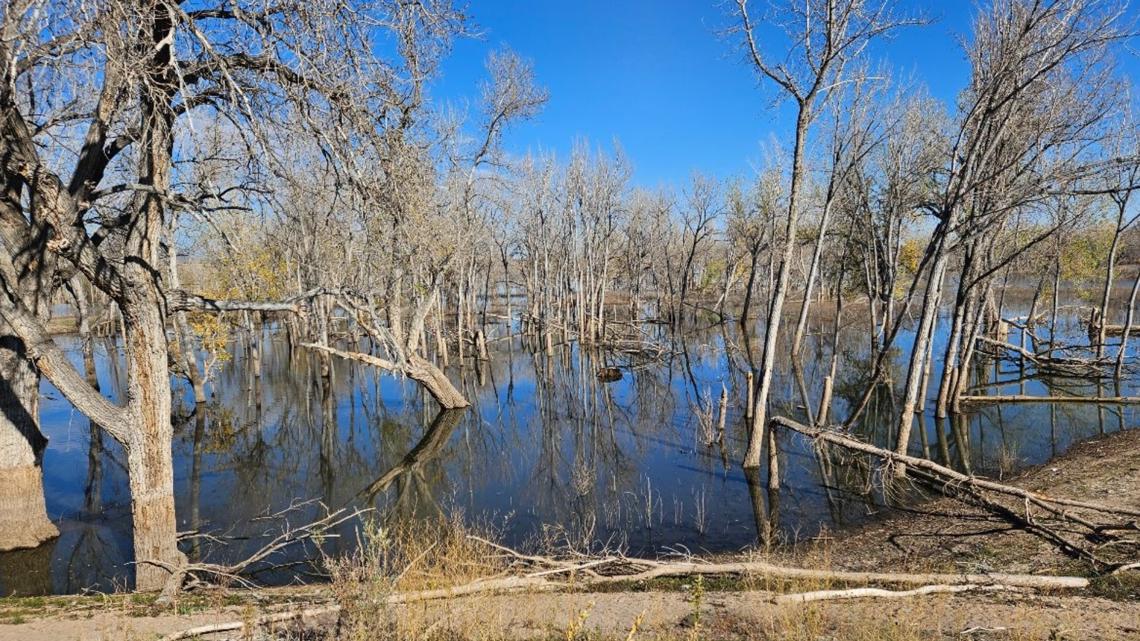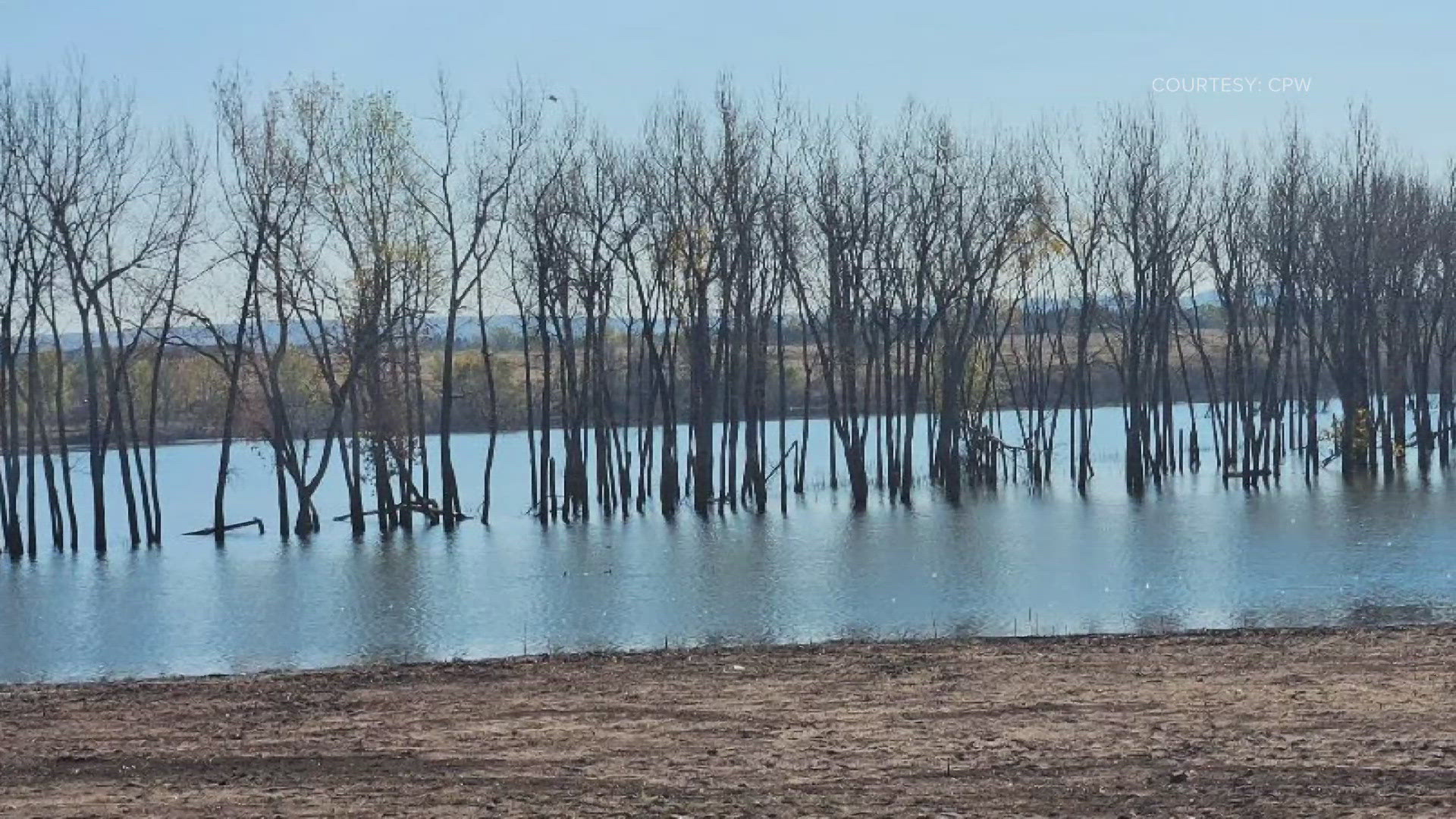JEFFERSON COUNTY, Colo. — About 2,700 dead and dying trees will be removed starting this week at Chatfield State Park, according to a Colorado Parks and Wildlife news release on Monday.
That might sound like a lot, but CPW said it's less than 1% of the overall number of trees in the park. The cottonwood and willow trees are in the reservoir. They could pose danger to visitors or produce debris that clogs the Chatfield Reservoir dam outlet, the agency said.
The removal starts this week and will take about six months. The Chatfield Reservoir Mitigation Co. will begin work at the north boat ramp and continue down the western shores of the reservoir, stopping at the South Platte River.
Another 2,300 cottonwoods and willows could be removed starting in winter 2024.
Many of the trees slated for removal have started to topple over and lose large limbs, and dead trees are in danger of falling during high winds, CPW said.
The removed trees will used for stream stabilization and mulch.
“We have enjoyed having the cottonwood and willow trees in the reservoir for the past two years and been pleased by the new recreating opportunities the trees provided our visitors,” said CPW Chatfield Park Manager Kris Wahlers in the release. “We explored all options to keep the trees, but since they did not survive, we have to do what’s best for our visitors. Safety is our main priority, especially while you’re out on the water.”
In anticipation of removing the trees, in 2018, the Chatfield Reservoir Mitigation Co. started planting cottonwood and willow stakes and other shrubs in other areas of the park. More than 100,000 trees and shrubs have been planted, CPW said.
CPW also said it has worked with environmental contractors to mitigate impact to birds and is doing the work outside of nesting seasons. No bald eagle pairs have historically nested in the cottonwoods that are marked for removal, the agency said.



